Description
The Western Painted Turtle (Chrysemys picta bellii) is one of the most colorful and widespread turtles in North America. Here are key details about this species:
western painted turtle for sale
Physical Description
- Shell: The Western Painted Turtle has a smooth, oval carapace that is dark green to black with red, orange, and yellow markings along the edges. The plastron is typically bright orange or red with a distinctive dark, symmetrical pattern.
- Size: Adults usually range from 4 to 10 inches in length, with females generally larger than males.
- Sexual Dimorphism: Males have longer front claws and longer, thicker tails, while females are larger with shorter claws and tails.
Habitat
- Range: Native to central and western North America, from southern Canada to northern Mexico.
- Environment: Prefers slow-moving freshwater habitats such as ponds, lakes, marshes, and slow rivers with abundant vegetation and soft, muddy bottoms.
Behavior
- Diet: Omnivorous; their diet includes aquatic vegetation, algae, insects, crustaceans, and small fish. Juveniles are more carnivorous, while adults consume more plant material.
- Activity: Diurnal and highly aquatic, they are often seen basking on logs or rocks. They hibernate during the winter in colder climates, burrowing into the mud at the bottom of their aquatic habitats.
- Lifespan: Can live up to 20-40 years in the wild and even longer in captivity with proper care.
Reproduction
- Breeding Season: Mating usually occurs in the spring and summer.
- Nesting: The painted turtles Females lay eggs on land, digging nests in sandy or loamy soil near water. Clutch sizes can vary, typically containing 4-15 eggs.
- Incubation: Eggs incubate for about 72-80 days, and the temperature of the nest influences the sex of the hatchlings.
Conservation Status
- Threats: Habitat loss, water pollution, road mortality, and collection for the pet trade are significant threats. Predation by raccoons and other animals can also impact populations.
- Conservation Efforts: Conservation measures include habitat protection, creation of wildlife corridors to reduce road mortality, and public education on the importance of not capturing wild turtles.
Care in Captivity
- Aquarium Setup: Requires a large tank with both swimming space and a basking area. UVB lighting is essential for their health.
- Water Quality: Clean, filtered water is necessary to prevent infections and other health issues.
- Diet: A balanced diet of commercial turtle pellets, leafy greens, and occasional protein sources like insects or small fish




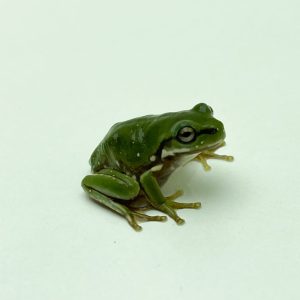


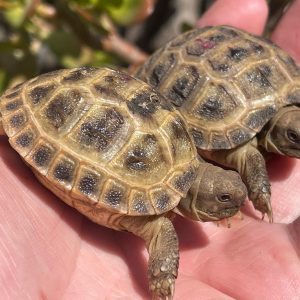
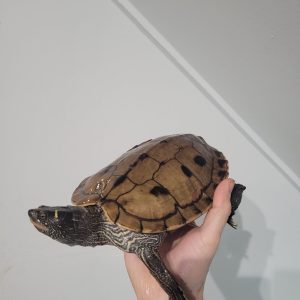
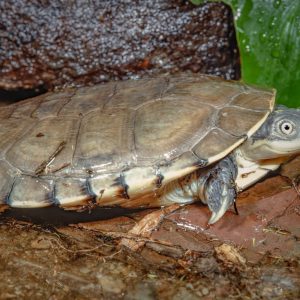
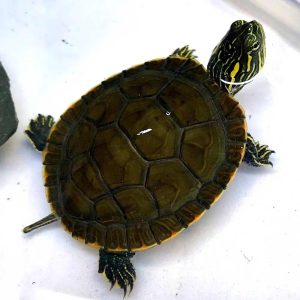
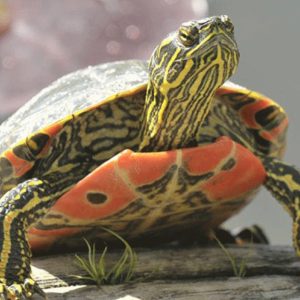
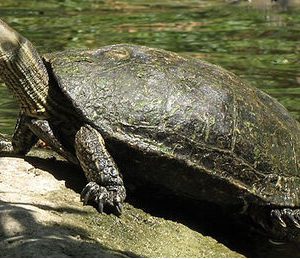
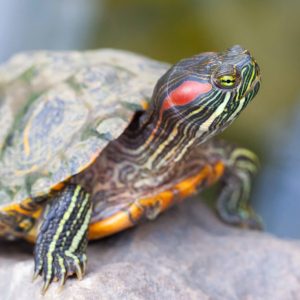

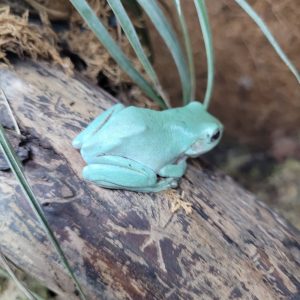
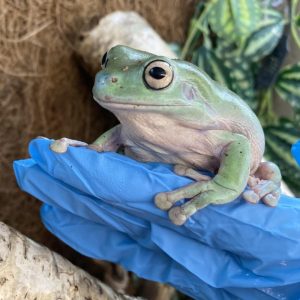
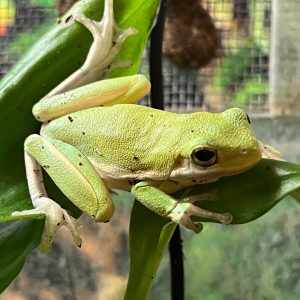
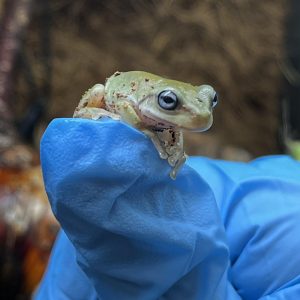
Reviews
There are no reviews yet.